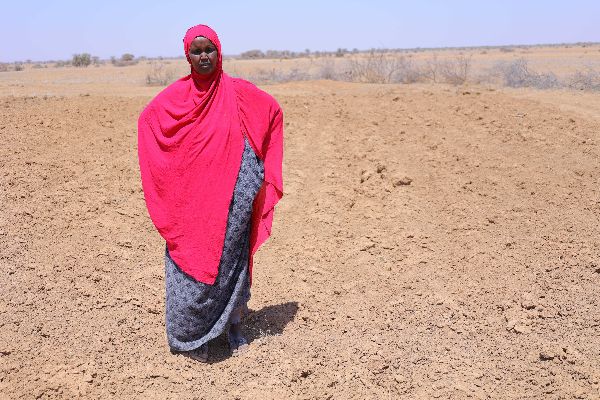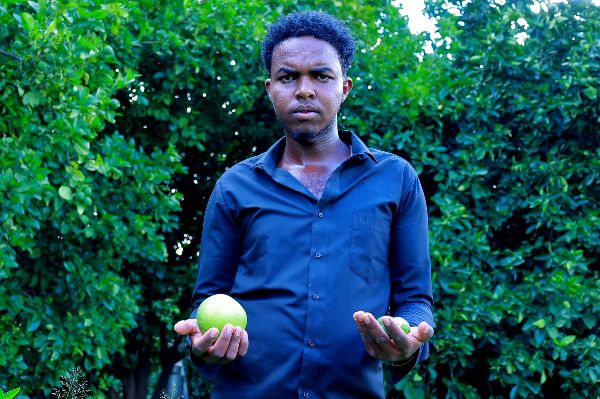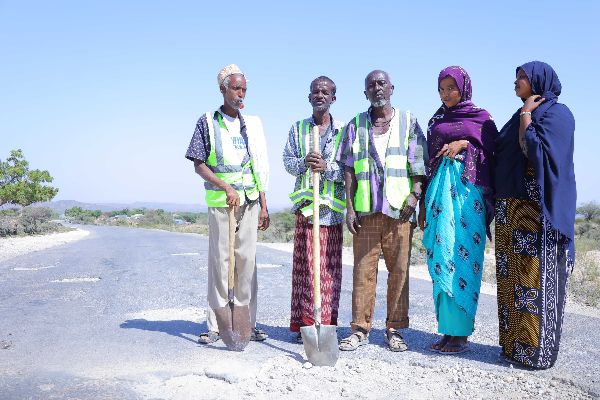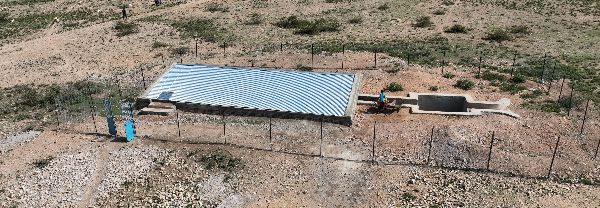
Animal Production and Health: Improving fodder production
Nimco Abdilahi, 38, who has lived in Xaaxi since birth, recalls that as long she can remember, pastoralists in Togdheer rarely stored fodder to feed their livestock during times of drought."Even those who stored it, kept it dry, which meant it had fewer nutrients and barely fed the livestock," says Nimco, referring to the few who did try to keep fodder back for the dry season. But now with the support of SDF, the Ministry of Livestock and Fisheries Development (MoLFD) is helping change that around, under the banner of the Strengthening Animal Production and Health Services Project.

Nimco is one of 18 people who were trained in 2022: "The most important thing I learned from the training was new methods of storing fodder without drying. This retains its nutritional value and means that I can give my animals a better diet during drought and other times. I even learned about new types of fodder seeds that are more resilient and better than the ones we were growing.”
This is just one component of the project which aims to improve the livelihoods of livestock producers and fodder farmers in the Togdheer region. It also includes further training, operational research, support for disease surveillance, and increasing fodder production through irrigation schemes. For example, the project is funding the construction of a water diversion weir in the wadi that runs through Xaaxi. Up until now, all fodder farmers relied on the wadi for irrigation, but only a few farms adjacent to it received adequate water. The new weir, which is nearing completion, will divert water to an additional 400 hectares of productive land.

Nimco Abdilahi, a Xaaxi fodder seller, explains: "I am a member of the Sisinta farming cooperative. We are currently clearing and weeding the land in preparation for the water diversion, which should be completed in time for the upcoming Gu' season. The government has also promised to supply us with new types of fodder seeds that are edible to both livestock and humans”.
In another component, the Aroori Livestock Center of Excellence (ALCE), the project will support Xaaxi fodder farming associations with the provision of tractors to prepare the land, crop processing machines, and with improved extension services.
"Thanks to SDF, we have several fodder processing machines in the ALCE to prepare the fodder for storage," says Abdiweli Mohamud, the ALCE manager. "We are now experimenting with a type of fodder seed brought from outside the country to see if it is suitable for use here."
In addition, the Livestock Ministry has established a large demonstration farm in Xaaxi to show farmers how to grow new types of fodder to increase their production. Ultimately, another 176 Xaaxi farmers will be trained in improved fodder production.













